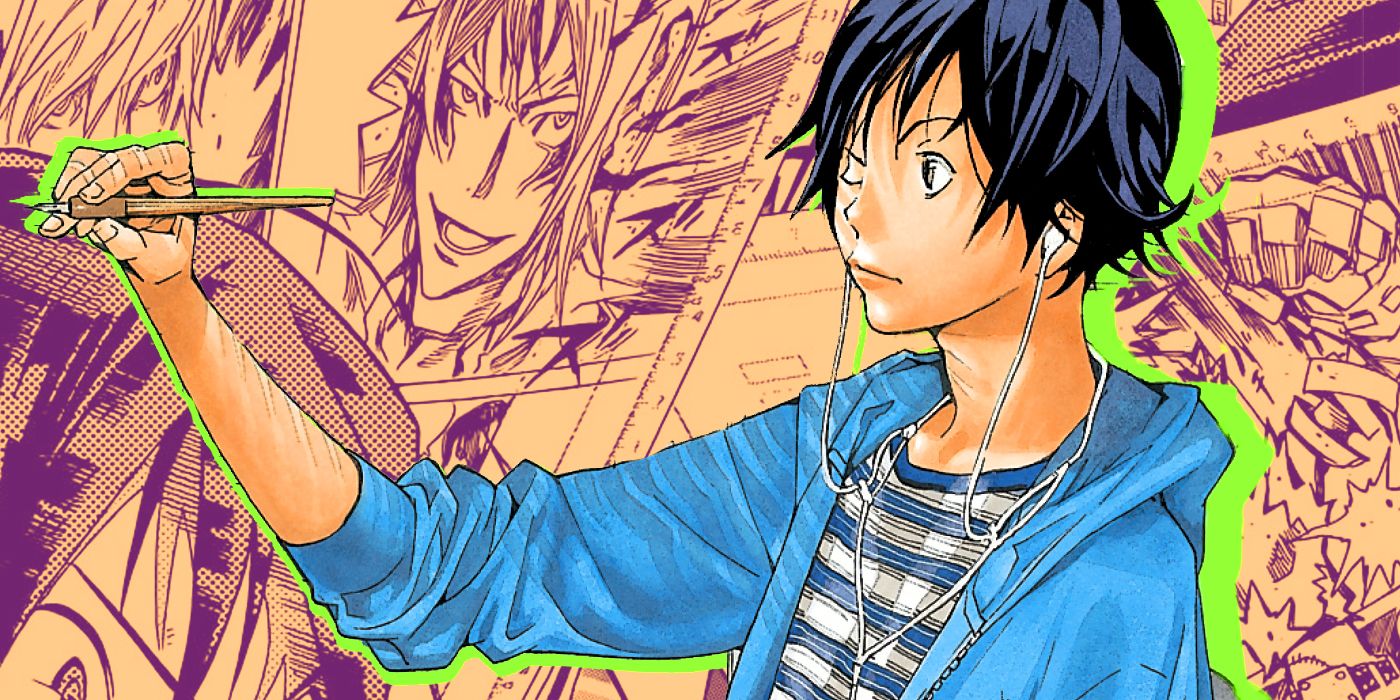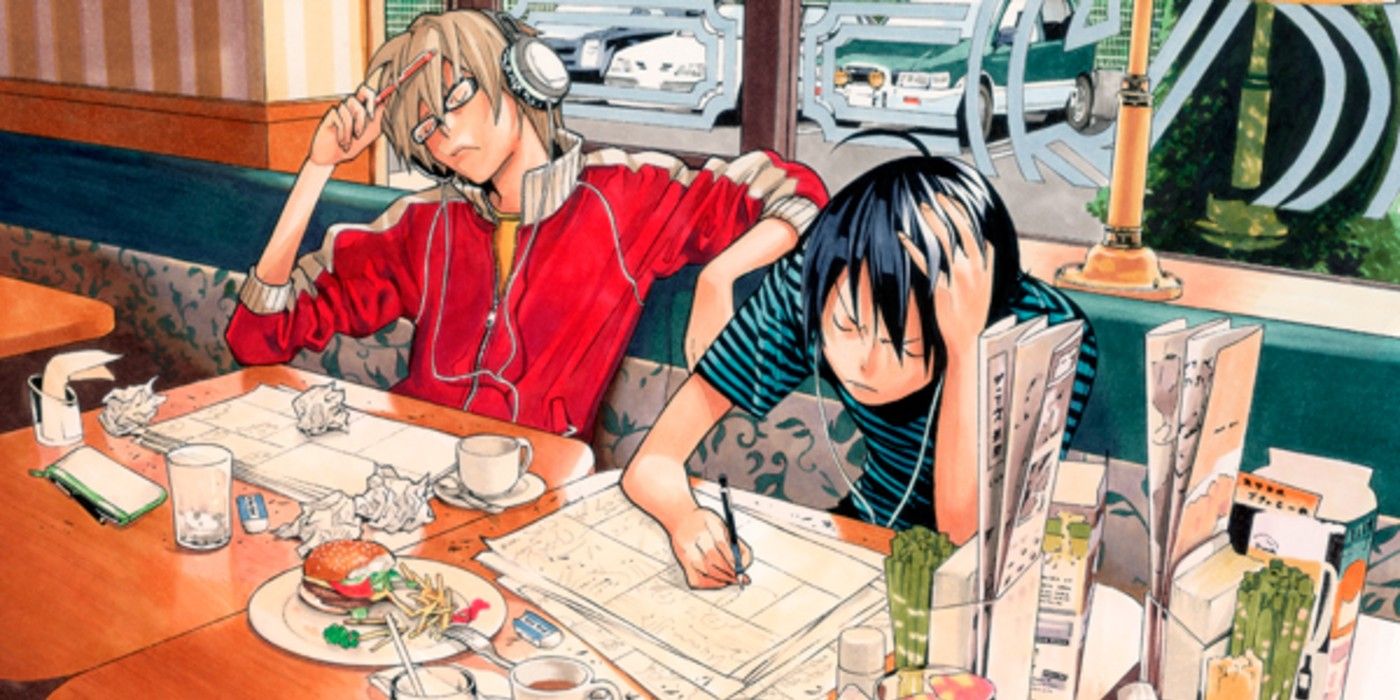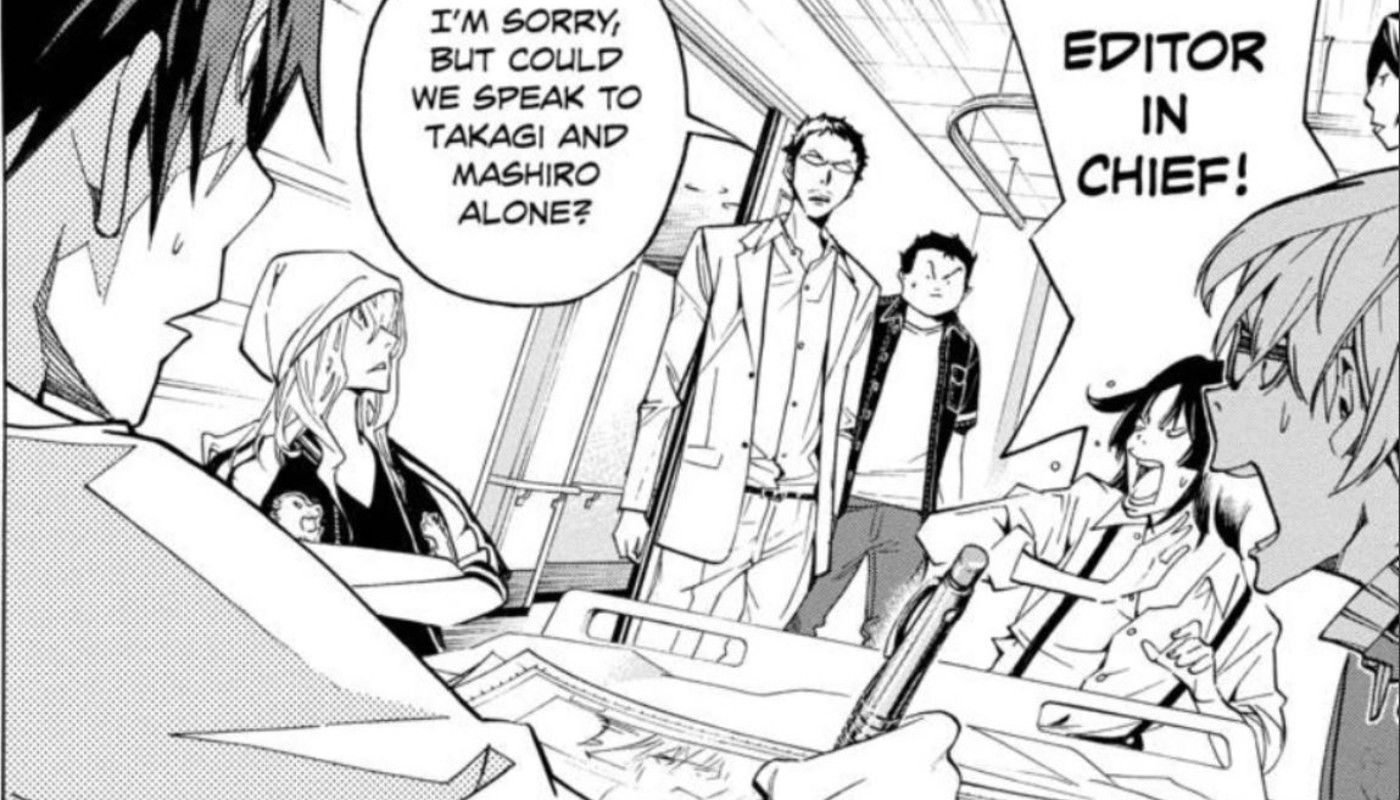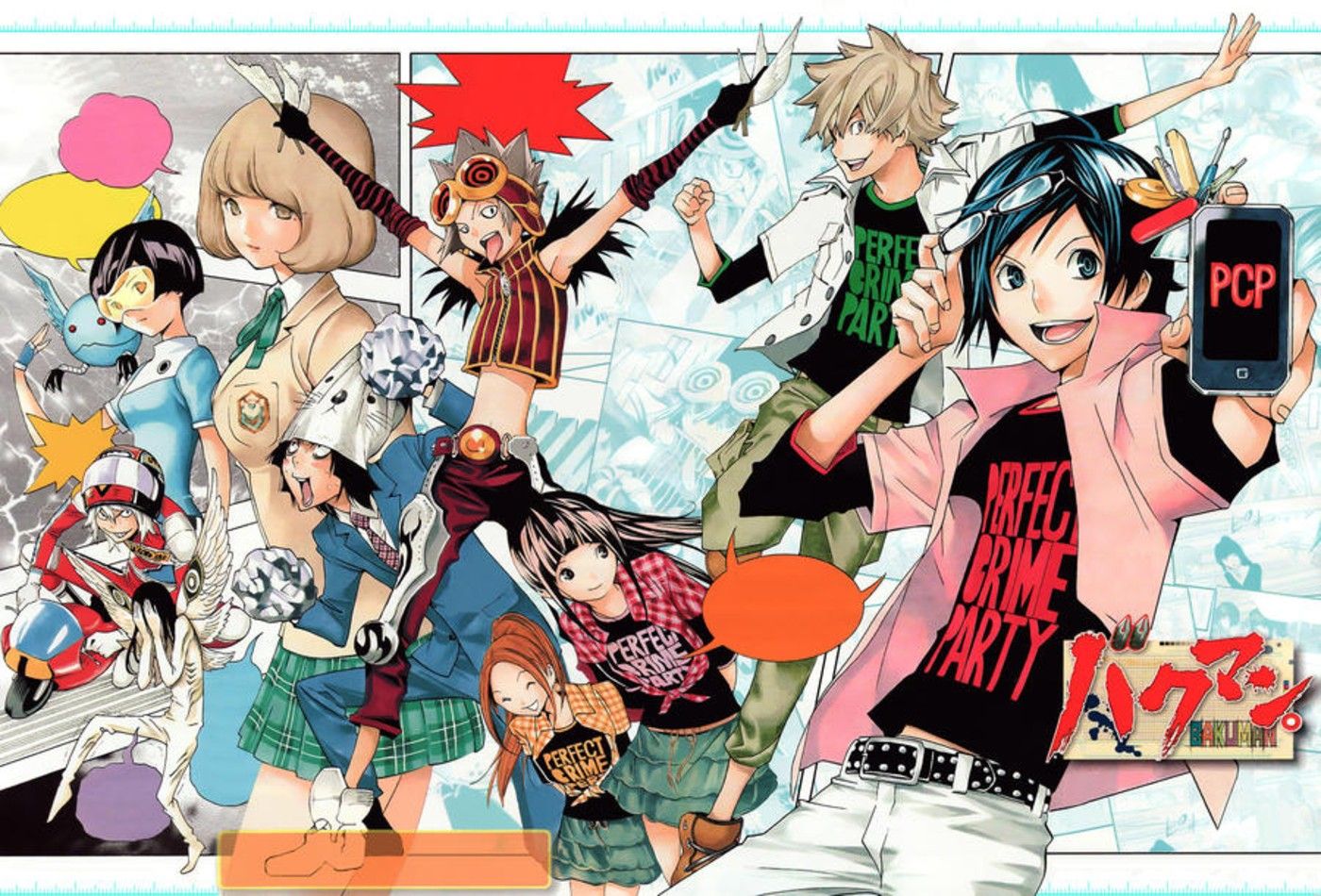
When you really examine Shonen Jump Magazine as a whole you realize that in a way, this anthology comic publication is its own weekly tournament arc. Over a dozen different manga put out a new chapter every week, and readers can vote to determine their favorites and give feedback through weekly surveys. The worst possible outcome is if a series is doing too poorly -- then the possibility of cancellation hangs over its head. This is the driving force behind Bakuman, a meta-shonen manga about two young boys trying to create the best series ever to hit the pages of Shonen Jump.
Bakuman began publication in Weekly Shonen Jump in 2008, written by Tsugumi Ohba and illustrated by Takeshi Obata, the same brilliant duo behind the "cat and mouse" thriller manga/anime Death Note. At first glance, it may seem odd for the duo to go from a suspenseful crime drama about justice, god complexes, and global paranoia to a down-to-earth story about two young men wanting to create Japanese comics, but when you really look at it, Bakuman was the perfect followup to explore.

Bakuman follows two 14-year-old boys: Moritaka Mashiro, an apathetic illustrator who falls out of love with manga after the industry claims the life of his overworked mangaka uncle, and Akito Takagi, a talented writer who wants to create manga with Moritaka after discovering his ability. Moritaka promises he'll marry his childhood crush Miho after he makes a manga that can be adapted into an anime, and he and Akito become dedicated to creating the best Shonen Jump manga ever.
Off the bat, you can really feel the shonen manga formula bleed into this series despite it not having any fantastical elements or magical abilities. Two young boys decide to enter a new world (Shonen Jump) they're unfamiliar with, where they'll need to pour their blood, sweat and tears into following their dream. Sound familiar? Bakuman takes everything we love about shonen (growth, guts, and friendship) and applies it to the process of making those shonen comics, which gives it an authentic feeling as it's coming from two pro manga creators.
Watching Mashiro and Takagi go from rookie creators to fully-fledged pros within the pages of Jump is such an awe-inspiring story, you can't help but root for them. They don't always meet with success though -- they struggle and fumble at times, but those moments of failure give them opportunities to learn and grow as creatives. It takes three published one-shots before the duo finally make a series suited to the readers of Shonen Jump. The editors are happy with their art quality and paneling as the trial brings out the best in Takagi's writing and Mashiro's art.
As the Bakuman story goes, we get a substantial amount of story arcs that shake up the lives of these budding mangaka. After Mashiro suffers from dehydration and exhaustion from their first weekly series, he must confront having their project go on hiatus when it's found he may need surgery. The series reminds readers that the life of a weekly manga artist is a taxing one that can destroy the health of creators.

We see this followed up later on in Chapter 130, on the day of Mashiro and Takagi's elementary school reunion. Now in his 20s, Mashiro meets up with former classmates for the first time in forever, but there's a distance. All the other party-goers are making plans for beach and skiing trips, but when they ask Mashiro to tag along he says he needs the weekends to work on storyboards and can't risk injuring his arm. Despite having followed his dream, Mashiro realizes he's never really experienced his youth the same way that most normal people his age have and it's quite somber.
Still, after meeting back up with Takagi, the two reassure themselves that they are still happy even if following their dream has consumed so much of their lives. It's a tender moment the two young men share as, by the end of it, they feel more motivated than ever to create a series that can rank higher than their rival, Eiji Niizuma.
Those same rivalries are also part of what makes Bakuman such a compelling shonen. You have the talented but unmotivated Hiramaru who's under the iron fist of his editor, Yoshida. There's Takagi's old academic rival, Aiko Iwase, who's determined to prove she's a superior writer to Takagi through manga after he rejects her love confession. And of course, the manga-making machine, Eiji Nizuma, whom the boys have been competing against since their first days at Jump. All these characters are mangaka for one reason or another. Seeing the weekly battle for first place among the readers makes each of them feel as authentic, with no one being simple fodder for Mashiro and Takagi to surpass.

The only downside to Bakuman is an all-too-familiar shonen fault -- how it writes its female characters. While there is a good number of female characters in this series who are all likable in their own way, most if not all have motivations tied to love, which gets tiresome after a while. For example, Takagi's girlfriend, Kaya Miyoshi, never really gets her story beyond supporting Takagi and Mashiro, which is a shame because her personality brings a good amount of levity to the boys' wound-up lives.
Bakuman's a well-told story, but that would only take it so far as a manga if not for Takeshi Obata's kinetic stylish art. Look at any of Obata's color pages and it's easy to see this is an artist who can bring out liveliness and vibrancy in even the simplest actions. He's able to bring out the best in terms of expression, as you can tell exactly when Mashiro is struggling with inking or completely in the zone even if the dialogue was removed.
Anyone with a love for manga and comics should give Bakuman a read just for the in-depth look into the powerhouse that is Shonen Jump. This is a series for artists and writers too, as moments of the characters dealing with impostor syndrome, writers' block, or being unsatisfied with their work all carry that genuine weight that any creative recognizes. Still, Bakuman is not a series that revels in misery, and when our boys do achieve victories they feel earned as their dream suddenly feels just a little bit closer.
0 Comments